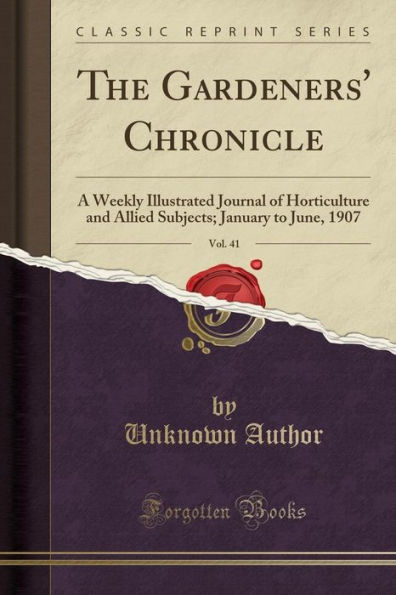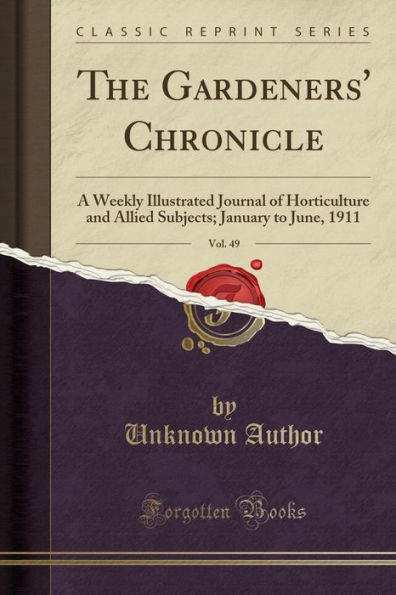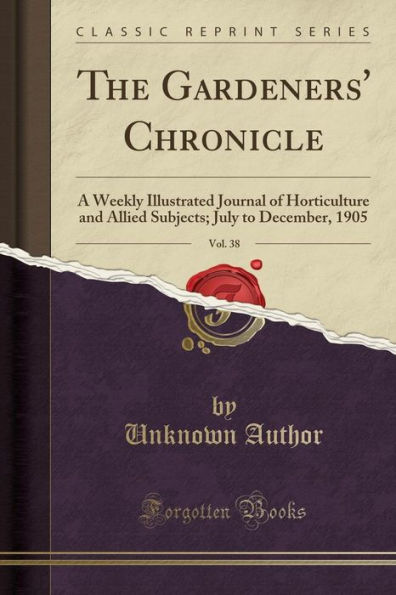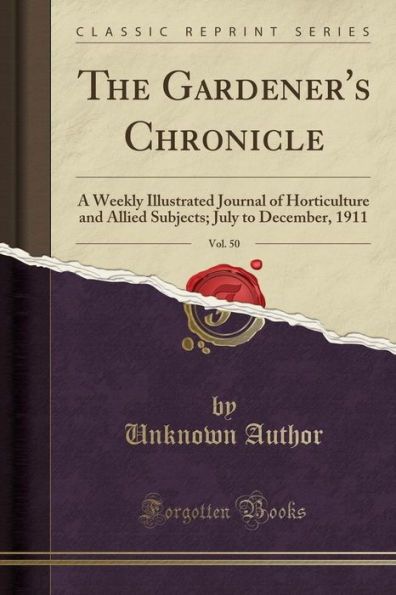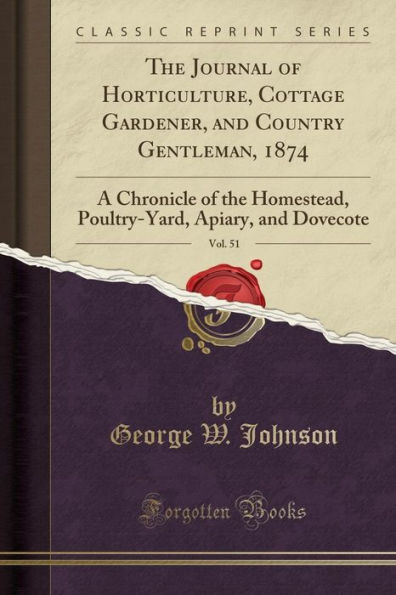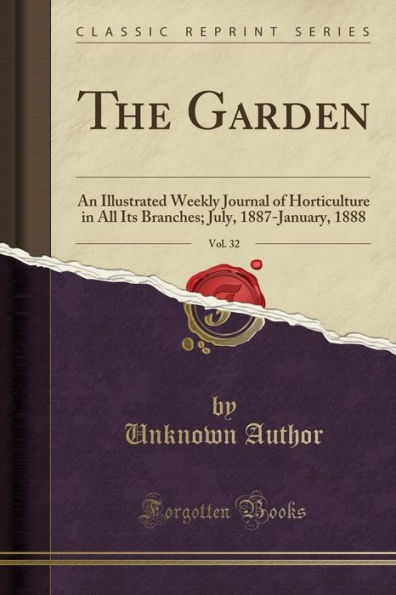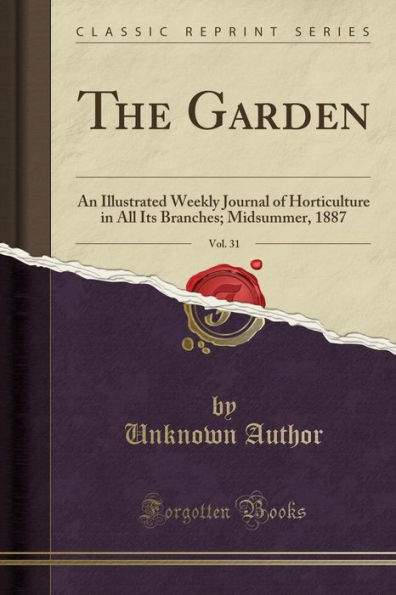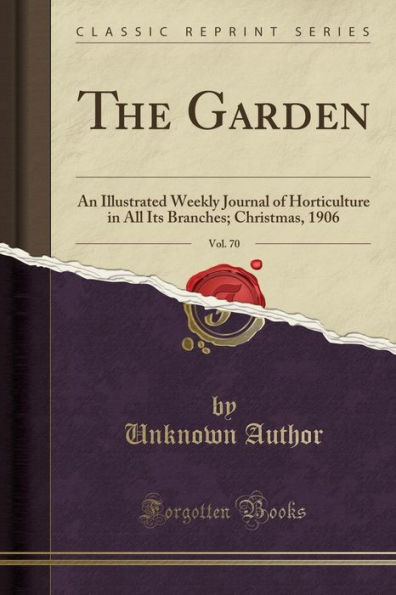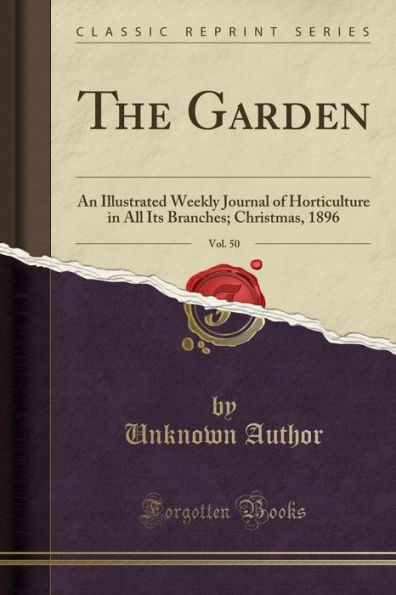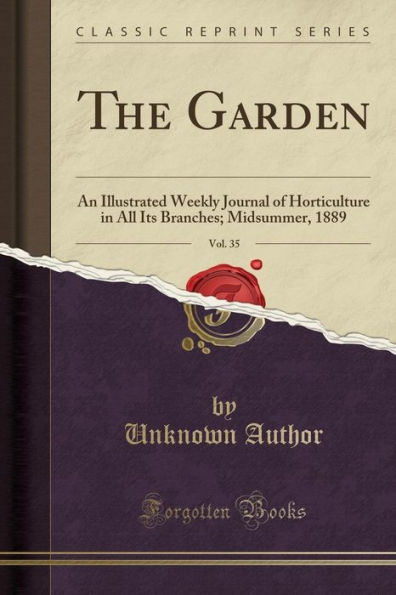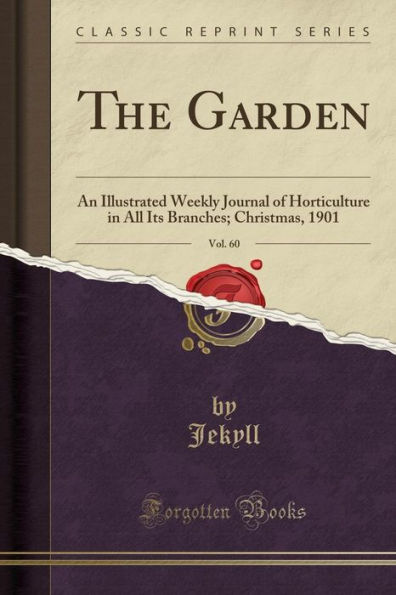Home
The Gardeners' Chronicle, Vol. 51: A Weekly Illustrated Journal of Horticulture and Allied Subjects; January to June, 1912 (Classic Reprint)
Loading Inventory...
Barnes and Noble
The Gardeners' Chronicle, Vol. 51: A Weekly Illustrated Journal of Horticulture and Allied Subjects; January to June, 1912 (Classic Reprint)
Current price: $19.57
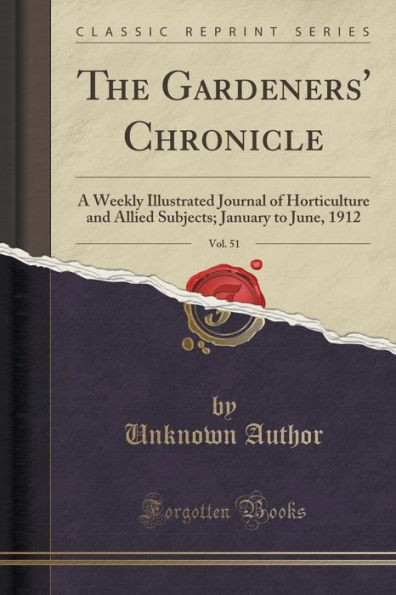

Barnes and Noble
The Gardeners' Chronicle, Vol. 51: A Weekly Illustrated Journal of Horticulture and Allied Subjects; January to June, 1912 (Classic Reprint)
Current price: $19.57
Loading Inventory...
Size: OS
*Product Information may vary - to confirm product availability, pricing, and additional information please contact Barnes and Noble
Excerpt from The Gardeners' Chronicle, Vol. 51: A Weekly Illustrated Journal of Horticulture and Allied Subjects; January to June, 1912
Allington Pippin, as mentioned on a previous occasion, is another variety of Apple difficult to train, though its habit of growth is entirely different from that of either of the varieties just noticed. Its main shoots are comparatively rigid, and its chief fault as a grower is that it produces a profusion of laterals, mostly pointing to the middle of the tree, and needing to be cut out severely. Lane's Prince Albert is similarly troublesome, and even more so in one respect, as its tendency is to produce shoots pointing downwards, while its growth is much less vigor ous than that of Allington Pippin. Both varieties in my soil have a propensity to pre mature fruiting, which needs severe correction to prevent stunting of wood growth.
One of the most disappointing varieties of the Apple planted by me is Domino, not because of its shaping, which is naturally symmetrical, but -on account of its inveterate propensity to clothe its branches so profusely with fruit spurs that its wood growth is dwarfed, and a tree becomes mature before its proper time. It appears to require a very rich soil or profuse manuring. The latter has been tried for the last and the present season, but it should have been done earlier. This variety needs very severe cutting-back in its early stages to promote strong growth.
Duchess of Oldenberg is not worth the trouble to train well, as its fruit is not good enough in flavour for dessert, nor big enough to cook. Its shoots have the bad habit of growing inwards, and it is only by very severe thinning out of in ternal shoots and cutting the rest to buds point ing outwards, year after year, that trees of satis factory shape can be produced. Summer-pruning, or, still better, disbud-ding quite early in the summer, is needed in this case, as it is with Allington Pippin and Lane's Prince Albert.
About the Publisher
Forgotten Books publishes hundreds of thousands of rare and classic books. Find more at www.forgottenbooks.com
This book is a reproduction of an important historical work. Forgotten Books uses state-of-the-art technology to digitally reconstruct the work, preserving the original format whilst repairing imperfections present in the aged copy. In rare cases, an imperfection in the original, such as a blemish or missing page, may be replicated in our edition. We do, however, repair the vast majority of imperfections successfully; any imperfections that remain are intentionally left to preserve the state of such historical works.
Allington Pippin, as mentioned on a previous occasion, is another variety of Apple difficult to train, though its habit of growth is entirely different from that of either of the varieties just noticed. Its main shoots are comparatively rigid, and its chief fault as a grower is that it produces a profusion of laterals, mostly pointing to the middle of the tree, and needing to be cut out severely. Lane's Prince Albert is similarly troublesome, and even more so in one respect, as its tendency is to produce shoots pointing downwards, while its growth is much less vigor ous than that of Allington Pippin. Both varieties in my soil have a propensity to pre mature fruiting, which needs severe correction to prevent stunting of wood growth.
One of the most disappointing varieties of the Apple planted by me is Domino, not because of its shaping, which is naturally symmetrical, but -on account of its inveterate propensity to clothe its branches so profusely with fruit spurs that its wood growth is dwarfed, and a tree becomes mature before its proper time. It appears to require a very rich soil or profuse manuring. The latter has been tried for the last and the present season, but it should have been done earlier. This variety needs very severe cutting-back in its early stages to promote strong growth.
Duchess of Oldenberg is not worth the trouble to train well, as its fruit is not good enough in flavour for dessert, nor big enough to cook. Its shoots have the bad habit of growing inwards, and it is only by very severe thinning out of in ternal shoots and cutting the rest to buds point ing outwards, year after year, that trees of satis factory shape can be produced. Summer-pruning, or, still better, disbud-ding quite early in the summer, is needed in this case, as it is with Allington Pippin and Lane's Prince Albert.
About the Publisher
Forgotten Books publishes hundreds of thousands of rare and classic books. Find more at www.forgottenbooks.com
This book is a reproduction of an important historical work. Forgotten Books uses state-of-the-art technology to digitally reconstruct the work, preserving the original format whilst repairing imperfections present in the aged copy. In rare cases, an imperfection in the original, such as a blemish or missing page, may be replicated in our edition. We do, however, repair the vast majority of imperfections successfully; any imperfections that remain are intentionally left to preserve the state of such historical works.
